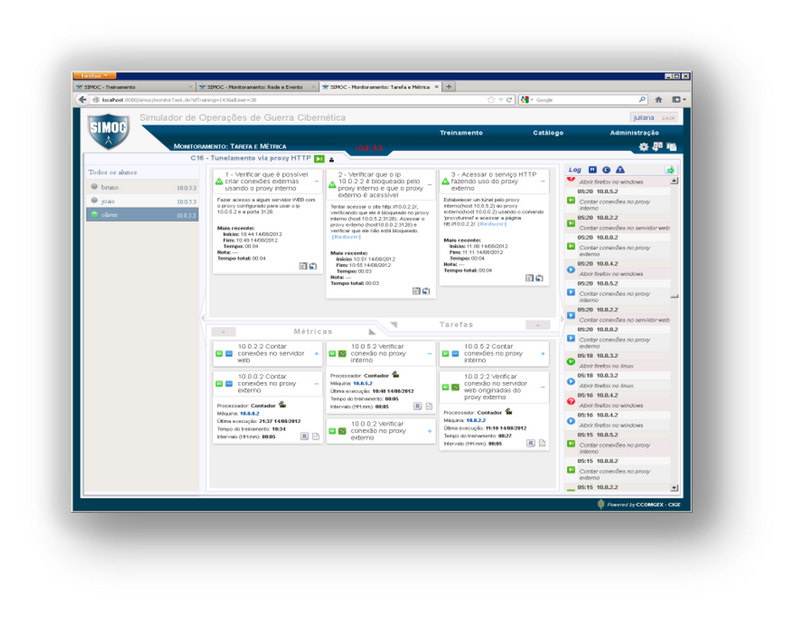

Simulation
SIMOC Cyber Range NG
The technological solution performs essential functions in an organization's Cybersecurity operation, built on over 10 years of experience in studying attack and defense approaches. It offers automated functions for prevention, anticipation, attack monitoring, as well as defense functions.'
SIMOC features intelligent objects, such as endpoint emulators and traffic generators, which allow virtualizing hundreds of network assets with a single scenario item, optimizing resource performance and ensuring a comprehensive visualization of corporate network topology.
Over the years, a powerful content has been developed, comprising a catalog with hundreds of automated objects, metrics, and events within the SIMOC Cyber Range.
All of them are incorporated into the platform and ready to be used immediately. Additionally, there are already over 50 training and capacity-building scenarios available on the platform.
Considering the technological advancements offered by 5G connectivity and Industry 4.0, the SIMOC Cyber Range perfectly meets the new needs and demands of universal IoT connections.
With this tool, we can simulate complex networks with high scalability involving these devices, test their cyber resilience, and address any vulnerabilities that may arise.
-
It can simulate both simple and complex infrastructures
-
Customize or create your own attack and defense scenarios with an easy-to-use graphical interface.
The simulation is ready, gather your teams and GO!!

SIMOC Cyber Range NG V4
Bring us your need and we will know how to implement a new simulation scenario.
Examples of cyber techniques applied in dozens of simulation scenarios:
-
Social engineering with phishing for data theft.
-
Malware insertion for data hijacking using ransomware.
-
DoS and DDoS attacks (Denial of Service).
-
Port scanning attack with brute force.
-
Man-in-the-Middle (ARP cache poisoning, DNS spoofing) and bypassing protections with SSH tunnel.
-
Detection and analysis of incidents using protection tools (SIEM, IDS, ...).
-
Exploiting vulnerabilities in web applications, Cross-Site Scripting (XSS), and SQL Injection.
-
Advanced techniques for network and service discovery and enumeration.





